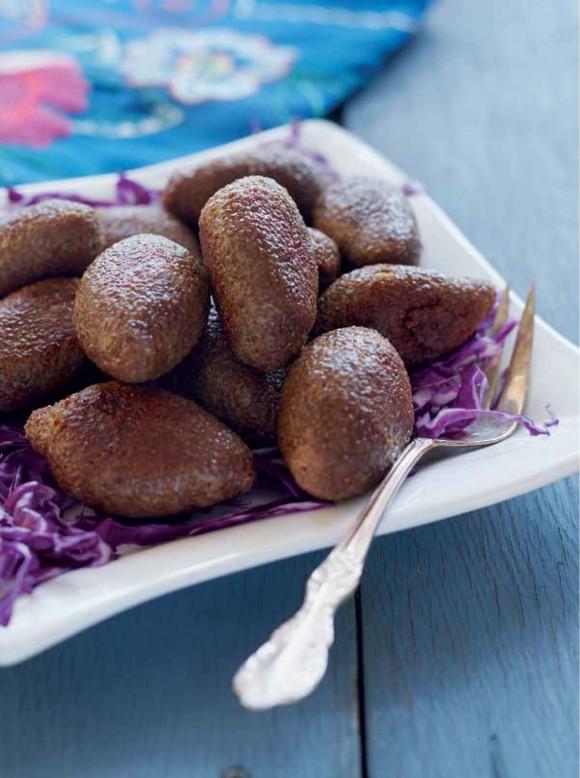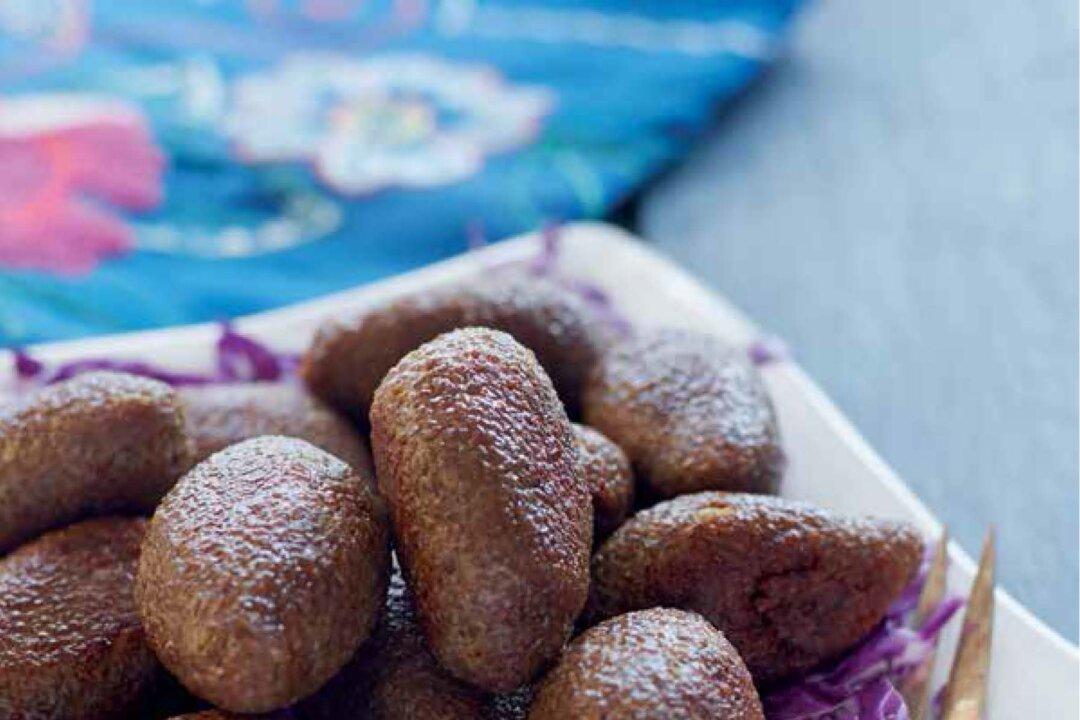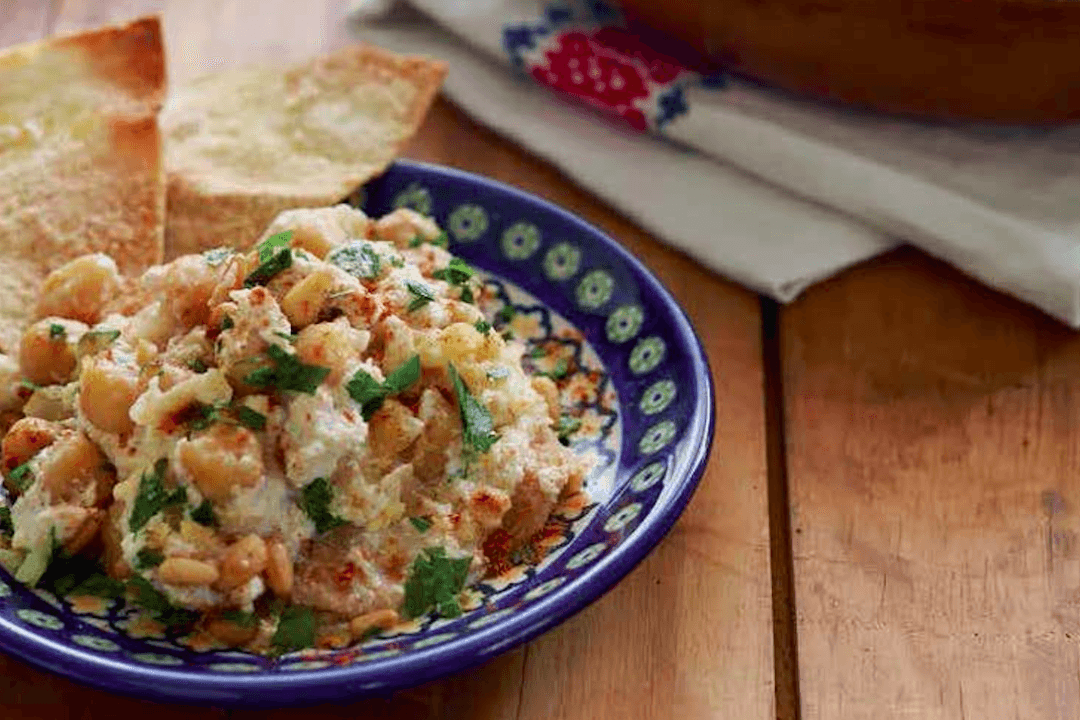Kibbeh Kbekib (Meat and Bulgur Spheres Stuffed With Lamb-Pine Nut Filling)
In Lebanese cuisine, any dish that combines cracked bulgur wheat and ground lamb is known as kibbeh. Kibbeh also has a number of different spellings, including kibbe and kibbee. This one is my absolute favorite; I can’t get enough of the out-of-this-world taste and texture of these addictive little nuggets.
Bulgur wheat is blended with ground lamb and onion and stuffed with heshwi, the traditional kibbeh stuffing of ground lamb, chopped herbs, spices, and buttery toasted pine nuts. Baked with butter, the end result is crispy on the outside, with a succulent, meaty filling inside. Paired with warm Khebez Arabi (the Lebanese version of pita bread) and a drizzle of Labneh (page 225), there’s really nothing more traditional or delicious.

Alexandra Grablewski


